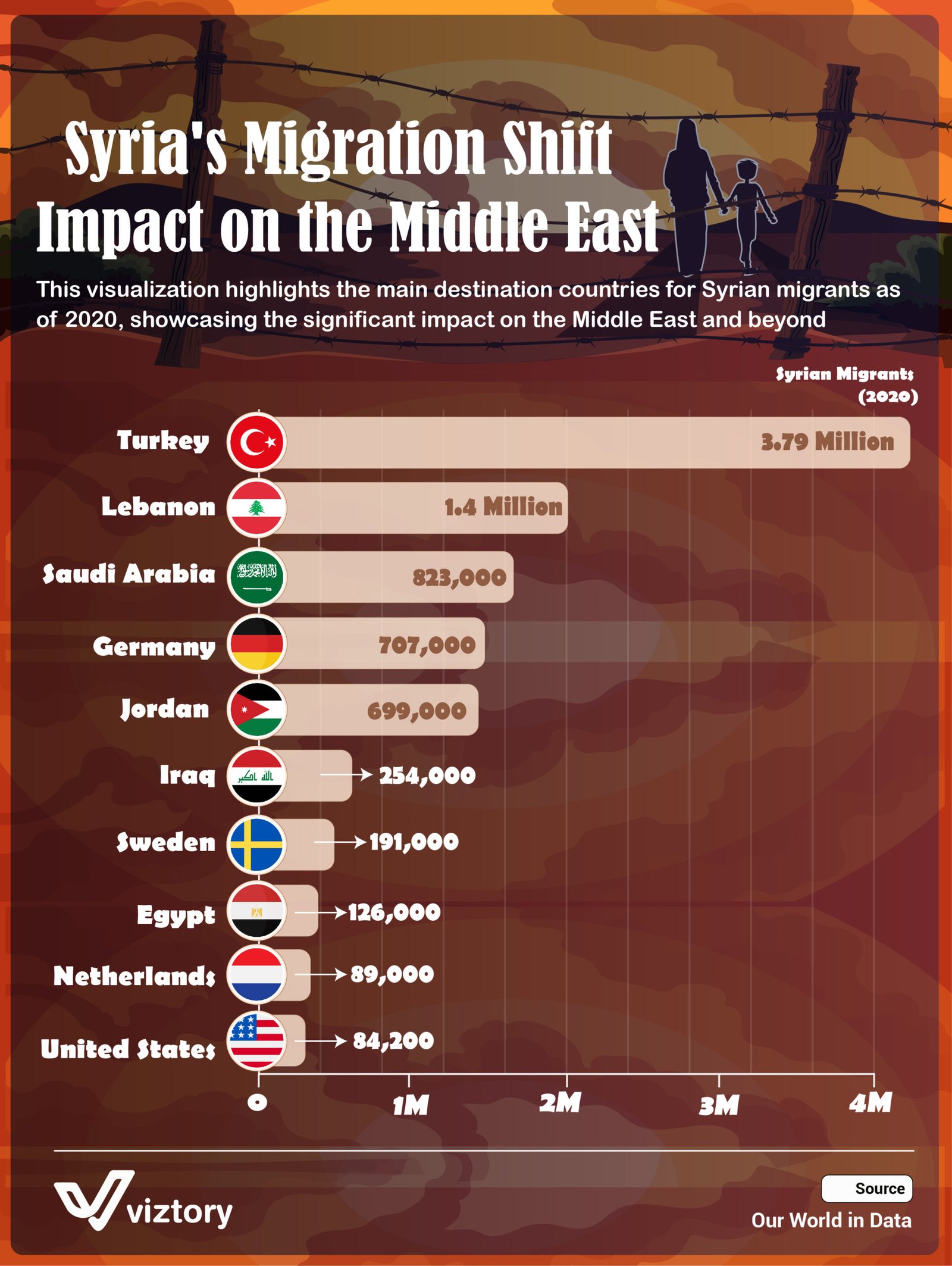Syria’s Migration Shift: Impact on the Middle East
-
Apr, Sat, 2025
Introduction
The Syrian conflict, which erupted in 2011, has led to one of the largest refugee crises in modern history. Millions of Syrians have been forced to flee their homes, seeking safety across borders. This mass displacement has dramatically reshaped the demographic and socio-political landscape of the Middle East and beyond. The image above visualizes the distribution of Syrian migrants as of 2020, highlighting the most affected destination countries.
Body
According to the data illustrated, Turkey has absorbed the largest number of Syrian migrants, hosting approximately 3.79 million people. This massive influx has created both opportunities and challenges for the Turkish government, especially in terms of resource allocation, integration policies, and regional diplomacy.
Following Turkey, Lebanon ranks second with 1.4 million Syrian refugees. Given its small population and ongoing economic instability, Lebanon has faced significant pressure on its infrastructure, healthcare, and housing systems. Syrian migration has deepened sectarian tensions and strained the country’s already fragile balance.
Saudi Arabia is home to 823,000 Syrians, followed by Germany (707,000) and Jordan (699,000). Germany’s presence among the top destinations reflects the broader international dimension of the crisis, showing that the impact of Syria’s migration shift extends well beyond the Middle East.
Other countries such as Iraq (254,000), Sweden (191,000), Egypt (126,000), Netherlands (89,000), and the United States (84,200) also appear on the list, indicating the global scale of displacement.
Analysis
This migration shift has significantly altered the socio-economic and political fabric of host countries. In the Middle East, the effects have been particularly acute. Countries like Turkey, Lebanon, and Jordan, despite having cultural and geographic proximity to Syria, have been stretched thin in trying to accommodate the influx.
The situation has also highlighted the role of international cooperation—or lack thereof. While some nations have stepped forward with open-door policies and humanitarian aid, others have been more reluctant, sparking debates about moral responsibility and international burden-sharing.
In terms of technology, several host countries have started using digital platforms and biometric systems to register and support refugees more efficiently. The integration of tech solutions has proven vital in managing aid distribution, healthcare access, and education services for displaced populations.
Conclusion
The migration shift from Syria remains one of the most defining humanitarian issues of our time. As the data suggests, the burden is not equally shared, with Middle Eastern nations bearing the brunt of the crisis. Moving forward, sustained international collaboration, along with the integration of smart technologies, is essential to address both the immediate needs and long-term integration of Syrian refugees. Only through joint effort can the world hope to turn this crisis into an opportunity for resilience and human solidarity.

